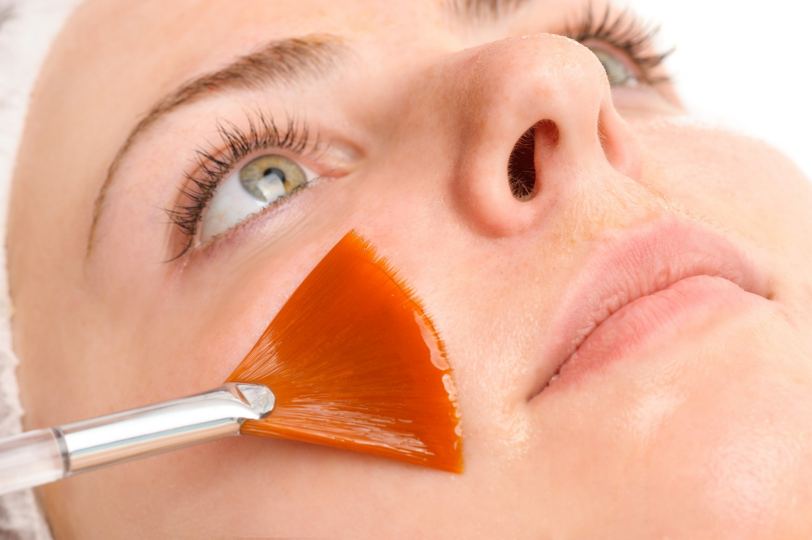Discolorations, especially those occurring on the face, make us feel unattractive, uncomfortable and we try to mask them at all costs. Most often, unsightly spots appear on the face, neck and décolleté. It is result from the intense sunlight exposure to these places. In addition, hyperpigmentation can be an unpleasant trace of acne, hormone therapy, pregnancy. May indicate thyroid and liver diseases, as well as be the result of taking antibiotics. They also appear with age, and although they most often affect women, this problem is also not unknown to men. Discoloration does not have to accompany us for the rest of our lives. We can get rid of them in a quick and painless way and enjoy smooth skin again. Chemical peeling will work great here.
What is chemical (medical) peeling?
It is a cosmetic procedure in which acids with the right concentration are used to exfoliate dead skin. Acids smooth the skin, helps with discoloration. During the procedure, a specially composed chemical compound is applied to the skin. The most commonly used acids are glycolic acid and other fruit acids, salicylic acid, lactic acid, and vitamin A. Acid should also be properly prepared. At least three weeks earlier you must not sunbathe. The week before you can not use skin irritants, dermabrasion and retinoids. Epilation, waxing and even using rough sponges are also not recommended. On the day of surgery, gentlemen should not shave so that the skin is not irritated.
What peels are used to treat hyperpigmentation?
Among the wide range of acids used in aesthetic medicine, the best effect on removing hyperpigmentation have:
– almond peeling – is perfect for people with sensitive skin, has bactericidal properties,
– salicylic peeling – the ability of salicylic acid to penetrate deep into the hair follicles. In addition to treating discolorations, it works great on skin with acne problems,
– Ferulac peeling – its main feature is rejuvenating effect. It also brightens discoloration and improves the overall condition of the skin.
Various peels can be combined with each other and with other treatments, e.g. microdermabrasion or cavitation peeling.
Who is the chemical peeling for?
Chemical peeling can be used by people who want to get rid of hyperpigmentation. Also for: dilated pores, spots, freckles, sun damage, scars, blackhead and papular-pustular acne. Indications for the use of peeling are also age-related skin changes, such as wrinkles or loss of skin firmness.
Contraindications for discolorations treatment.
Chemical peeling is not for everyone. Contraindications for the treatment are: tan, active herpes, skin allergies, pregnancy and breastfeeding, damaged and irritated skin, severe acne, as well as vitamin A derivative therapy (retinoids).
Post-treatment recommendations.
After chemical peeling, the skin is red and may peel strongly. Therefore, it is worth taking a vacation from work and spending a few days at home. You also have to comply with certain recommendations and bans. Make-up should not be applied for 24 hours after the procedure. In addition, it is forbidden to sunbathe for four weeks, it is also advisable to use creams with a high UV filter. Creams with AHA, i.e. acids, must not be used for two weeks after the procedure. The last prohibition, which may prove to be the most difficult to implement, is to refrain from scratching the peeling skin. To strengthen the peeling effect, it is recommended to use creams with vitamin C twice a day, intensive moisturizing of the skin is also recommended.
Depending on the type of discoloration and their severity, it depends on how many treatments should be carried out so that the effect is satisfactory. Usually, one to four treatments are performed. An additional effect of the treatment with the use of chemical peeling is a clear improvement in skin quality. Small wrinkles become shallower, the skin becomes stretched and smooth, and thus clearly rejuvenated.








